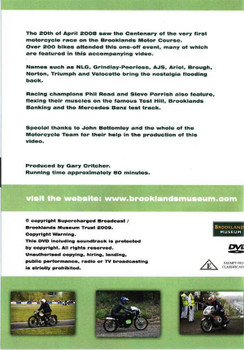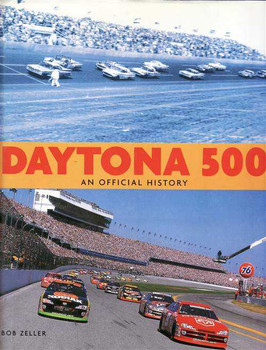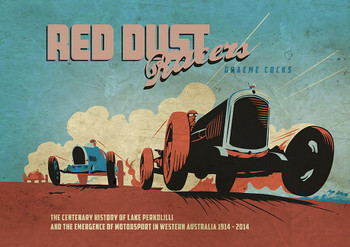Description
By: David Venables .
Brooklands, the cradle of motorsport in Britain, was the inspired creation of one man, Hugh Locke King, who realised that, for motoring to develop, a track was needed where cars could race at the highest speeds attainable. The banked circuit, opened in June 1907, was one of the great engineering wonders of the Edwardian era. It was soon a magnet for the fastest cars — Napier, Sunbeam, Bentley, the aero-engined monsters — and greatest drivers in the world, as well as hosting major motorcycle and cycle events. Huge crowds came to watch.
Brooklands was also the birthplace of aviation in Britain. An airfield built within the track was where most of the pioneer pilots learned to fly and many early aircraft were built and tested. It later became the hub of private flying too.
In this meticulously researched and gloriously illustrated Official Centenary History, David Venables celebrates every aspect of the famous Surrey landmark. The decades of motorsport endeavour — racing, record-breaking, long- distance events, club rallies and manufacturer testing — are chronicled in fascinating detail, as is the pivotal role Brooklands played in Britain's developing aviation industry. Appendices provide Outer Circuit lap records, winners of long- distance races, types of aircraft built, and maps showing how the site evolved.
The Brooklands history is a rich tapestry of triumph, tragedy, glamour and innovation. In the build-up to the First World War, Vickers and other companies established factories at the track, building many thousands of aircraft flown in action by the Royal Flying Corps and the fledgling Royal Air Force. In 1919 a Vickers Vimy from Brooklands was the first aircraft to cross the Atlantic successfully.
When racing resumed in 1920, the public was thrilled by high-speed duels on the rim of the banking between drivers such as Parry Thomas, Malcolm Campbell and Tim Birkin. Despite problems with noise restrictions and the limitations of the 1907 track design, racing continued unabated in the 1930s. But as Germany began re-arming, aircraft manufacture expanded at Brooklands again, led by Vickers and Hawker.
Two legendary Second World War military aircraft — Hurricane and Wellington — made their first flights at Brooklands. As a result of wartime damage and alteration, the track was no longer suitable for racing, but Brooklands remained a centre of aviation excellence. Many famous civil aircraft, including the Viscount and VC-10, came from the Vickers factory, as well as the Valiant, first of the RAF's V-bomber force. After Vickers became part of the British Aircraft Corporation (later British Aerospace), a major part of Concorde was produced at Brooklands.
Following the closure of the aircraft factories, the site seemed doomed to become a commercial centre and housing estate, but the opening of the Brooklands Museum has preserved part of the historic track and a further boost came with the opening of the 'Mercedes-Benz at Brooklands' centre in 2006.
David Venables, formerly the Official Solicitor, is Assistant Editor of the Vintage Sports Car Club Bulletin and author of respected motor racing histories on Napier, Bugatti and Alfa Romeo.



















